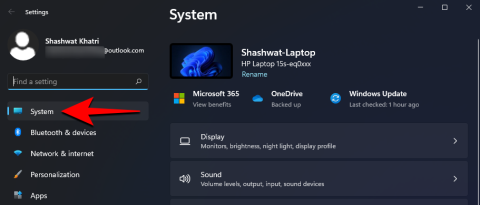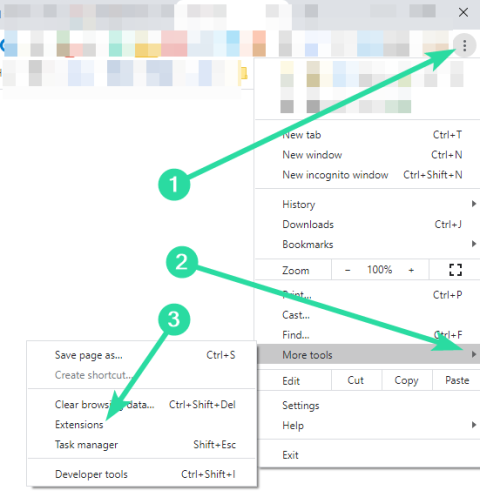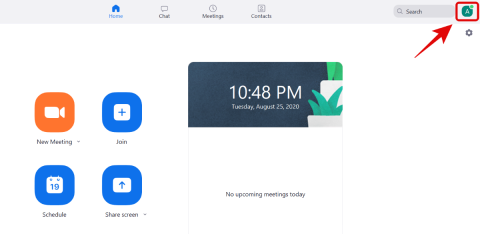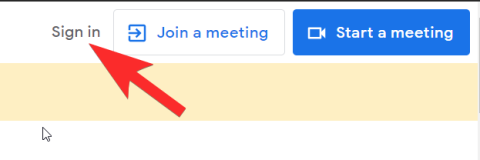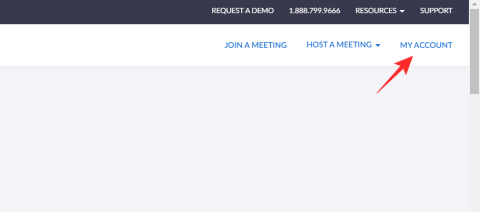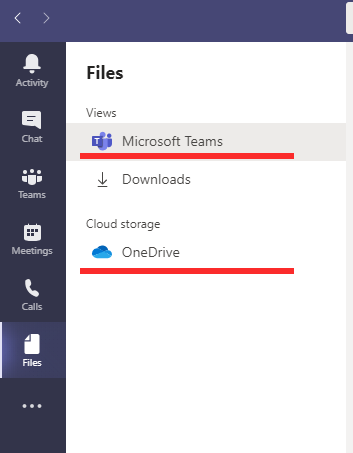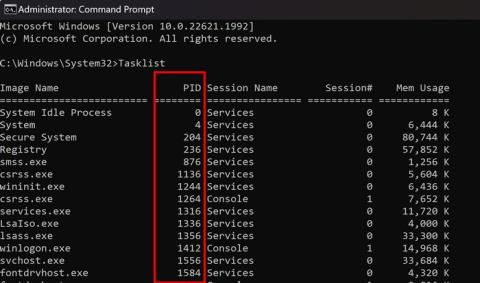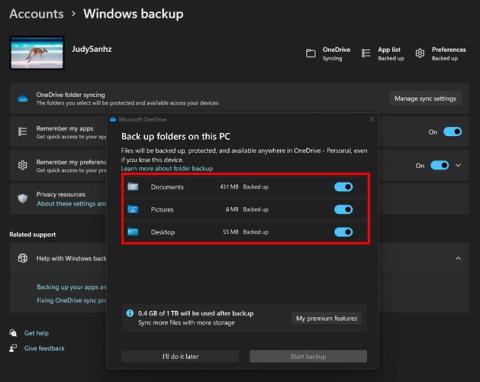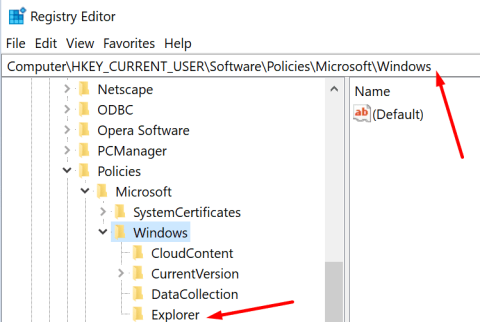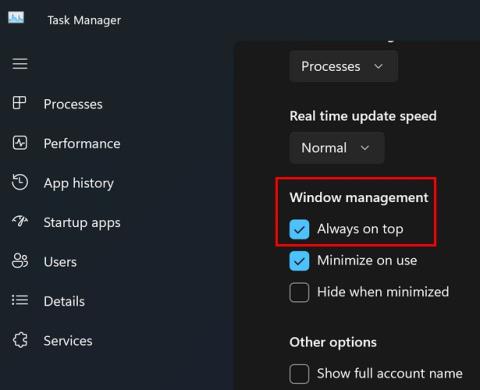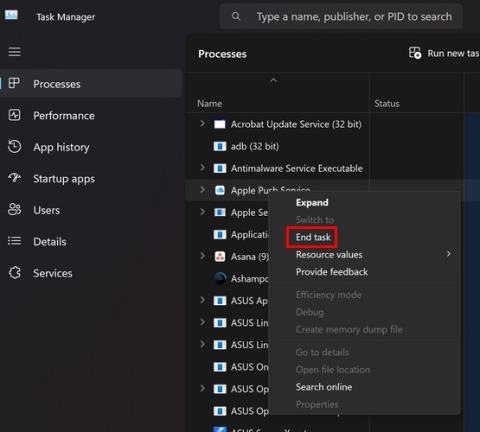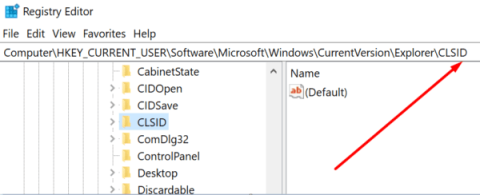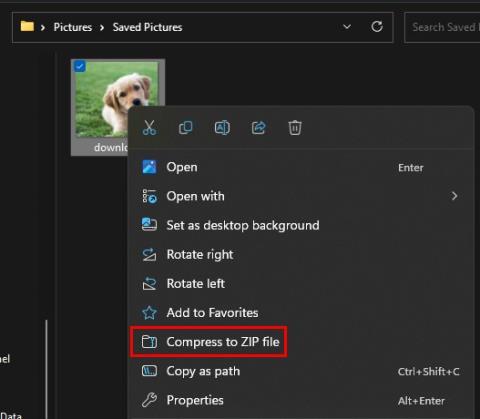Para os non iniciados, o inglés é unha lingua xermánica, mentres que linguas como o español, o francés, o portugués, o italiano e o romanés son linguas "romances" (como nas derivadas do latín vulgar que se falaba no extenso Imperio Romano). Pero Inglés fai prestado duramente a partir deles e, como resultado, vai atopar unha morea de frases acentuados que compoñen o seu vocabulario, como o café , inxenua , cortexo , déjà vu , etc., necesitando que escriba-os na súa escrita profesional .
Pero como se escriben acentos en Windows ? A falta do coñecemento xeral, a maioría de nós tendemos a copiar e pegar acentos e símbolos cando é necesario. Pero se tes que usalos con frecuencia, como cando estás aprendendo a escribir noutro idioma ou empregando os acentos e os diacríticos correctos na túa documentación, non hai solución para saber como escribir acentos.
Entón, para axudarche a aprender e facilitarche as cousas a longo prazo, aquí tes todas as formas que podes usar para comezar a escribir acentos en Windows e a mellorar as túas habilidades de ortografía pedante.
Relacionado: Atallos de Windows 11: A nosa lista completa
Contidos
Método #01: Usando o mapa de caracteres de Windows
En lugar de navegar pola web cada vez que queiras copiar un símbolo, podes facer uso do Mapa de caracteres de Windows para conseguir un camión cargado de símbolos e personaxes de varias linguas, tanto mortas como vivas. Vexa como pode acceder ao mapa de caracteres de Windows:
Preme o botón Inicio, escribe mapa de caracteres e fai clic na aplicación Mapa de caracteres.
![Como escribir acentos en Windows 11 [6 xeitos] Como escribir acentos en Windows 11 [6 xeitos]](https://img2.webtech360.com/resources8/images31/image-5218-0105182715553.png)
Alternativamente, tamén pode premer Win + Rpara abrir a caixa RUN, escribir charmap e premer Intro.
![Como escribir acentos en Windows 11 [6 xeitos] Como escribir acentos en Windows 11 [6 xeitos]](https://img2.webtech360.com/resources8/images31/image-4668-0105182715675.png)
Isto abrirá a aplicación "Mapa de personaxes". Aquí, mira os caracteres acentuados e atopa o que necesitas. Facendo clic nun, ampliarase para ver mellor.
![Como escribir acentos en Windows 11 [6 xeitos] Como escribir acentos en Windows 11 [6 xeitos]](https://img2.webtech360.com/resources8/images31/image-2185-0105182715751.png)
Fai clic en Seleccionar para escoller un personaxe e aparecerá no campo "Caracteres para copiar".
![Como escribir acentos en Windows 11 [6 xeitos] Como escribir acentos en Windows 11 [6 xeitos]](https://img2.webtech360.com/resources8/images31/image-1321-0105182715815.png)
Fai clic en Copiar para copialo no portapapeis.
![Como escribir acentos en Windows 11 [6 xeitos] Como escribir acentos en Windows 11 [6 xeitos]](https://img2.webtech360.com/resources8/images31/image-8187-0105182715993.png)
Agora podes pegar o carácter copiado onde queiras. Se queres coñecer o código ASCII dun car��cter, móstrase na parte inferior dereita.
![Como escribir acentos en Windows 11 [6 xeitos] Como escribir acentos en Windows 11 [6 xeitos]](https://img2.webtech360.com/resources8/images31/image-7324-0105182716062.png)
Método #02: Usando os códigos da tecla Alt
Todos os caracteres acentuados que son compatibles con Windows teñen os seus propios códigos ASCII únicos, tamén coñecidos como códigos Alt. Pódense usar para escribir calquera procesador de documentos ou campo capaz de procesar e mostrar caracteres acentuados. Por suposto, necesitarías coñecer os códigos Alt para o mesmo. Aquí tes os códigos Alt para os caracteres acentuados comúns que necesitarías xeralmente:
![Como escribir acentos en Windows 11 [6 xeitos] Como escribir acentos en Windows 11 [6 xeitos]](https://img2.webtech360.com/resources8/images31/image-426-0105182716177.png)
Fonte: WindowsReport
Unha vez que coñezas os códigos Alt, aquí tes como podes introducilos:
- Move o cursor ata o campo onde quere escribir o carácter acentuado.
- Asegúrese de que
Num Lockestea activado xa que os códigos Alt só funcionan cando se escriben no teclado numérico. Non obstante, se estás a traballar nun portátil que non ten teclado numérico, podes seguir adiante e usar as teclas numéricas situadas enriba do teclado qwerty.
- Agora, mantendo pulsada a tecla Alt, escriba o código Alt para o carácter acentuado que quere introducir.
- O carácter acentuado só aparecerá cando solte a tecla Alt.
Como se mencionou anteriormente, os códigos ASCII ou Alt tamén están dispoñibles no mapa de caracteres de Windows. Fai clic no personaxe e o código Alt aparecerá na esquina inferior dereita.
![Como escribir acentos en Windows 11 [6 xeitos] Como escribir acentos en Windows 11 [6 xeitos]](https://img2.webtech360.com/resources8/images31/image-7324-0105182716062.png)
Método #03: Usando o teclado inglés internacional
Outra forma máis sinxela de engadir caracteres acentuados ao teu texto é facelo usando o teclado inglés internacional. Pero primeiro, terás que instalar e cambiar a el se non o fixeches. Aquí tes como facelo:
Instala o teclado internacional dos Estados Unidos
Prema Inicio, escriba idioma e seleccione Configuración de idioma .
![Como escribir acentos en Windows 11 [6 xeitos] Como escribir acentos en Windows 11 [6 xeitos]](https://img2.webtech360.com/resources8/images31/image-3427-0105182716314.png)
Na configuración do idioma, xunto a "Idiomas preferidos", fai clic en Engadir un idioma .
![Como escribir acentos en Windows 11 [6 xeitos] Como escribir acentos en Windows 11 [6 xeitos]](https://img2.webtech360.com/resources8/images31/image-6428-0105182716434.png)
Despois busca inglés (Estados Unidos), selecciónao e fai clic en Seguinte .
![Como escribir acentos en Windows 11 [6 xeitos] Como escribir acentos en Windows 11 [6 xeitos]](https://img2.webtech360.com/resources8/images31/image-3945-0105182716512.png)
Fai clic en Instalar .
![Como escribir acentos en Windows 11 [6 xeitos] Como escribir acentos en Windows 11 [6 xeitos]](https://img2.webtech360.com/resources8/images31/image-3081-0105182716580.png)
Isto instalará o teclado inglés (Estados Unidos). Agora, fai clic nos puntos suspensivos xunto a English (Estados Unidos) .
![Como escribir acentos en Windows 11 [6 xeitos] Como escribir acentos en Windows 11 [6 xeitos]](https://img2.webtech360.com/resources8/images31/image-2531-0105182716692.png)
Seleccione Opcións de idioma .
![Como escribir acentos en Windows 11 [6 xeitos] Como escribir acentos en Windows 11 [6 xeitos]](https://img2.webtech360.com/resources8/images31/image-1980-0105182716798.png)
En "Teclados", fai clic en Engadir un teclado .
![Como escribir acentos en Windows 11 [6 xeitos] Como escribir acentos en Windows 11 [6 xeitos]](https://img2.webtech360.com/resources8/images31/image-2369-0105182954492.png)
Desprácese pola lista e seleccione Estados Unidos-Internacional .
![Como escribir acentos en Windows 11 [6 xeitos] Como escribir acentos en Windows 11 [6 xeitos]](https://img2.webtech360.com/resources8/images31/image-7119-0105182717109.png)
Agora verá o teclado "Estados Unidos-Internacional" listado en "Teclados".
![Como escribir acentos en Windows 11 [6 xeitos] Como escribir acentos en Windows 11 [6 xeitos]](https://img2.webtech360.com/resources8/images31/image-4085-0105182717292.png)
Cambia ao teclado dos Estados Unidos-Internacional
Now, to start using the International keyboard, you will have to first switch to it. There are a couple of ways of doing so:
The first way is to use the keyboard shortcut key to switch between keyboards. To do so, press Win + Spacebar and flip through the installed keyboards. While holding the Windows key, press the spacebar until you get to the United States-International keyboard.
![Como escribir acentos en Windows 11 [6 xeitos] Como escribir acentos en Windows 11 [6 xeitos]](https://img2.webtech360.com/resources8/images31/image-8922-0105182954635.png)
The keyboard that you’ve selected will be displayed towards the right of the taskbar, just before the action center.
![Como escribir acentos en Windows 11 [6 xeitos] Como escribir acentos en Windows 11 [6 xeitos]](https://img2.webtech360.com/resources8/images31/image-7508-0105182954807.png)
The other way to switch between keyboards is to simply click on the language bar…
![Como escribir acentos en Windows 11 [6 xeitos] Como escribir acentos en Windows 11 [6 xeitos]](https://img2.webtech360.com/resources8/images31/image-8813-0105182718495.png)
and choosing the keyboard that you want.
![Como escribir acentos en Windows 11 [6 xeitos] Como escribir acentos en Windows 11 [6 xeitos]](https://img2.webtech360.com/resources8/images31/image-3535-0105182718609.png)
Using the United States-International keyboard for accented characters
Once you have switched to the International keyboard, there are a couple of ways you can start typing accented characters.
1. Keyboard sequencing: The first way is to learn the keyboard sequence that uses the combination of punctuation marks and the letter keys to enter accented characters.
For example, to get an ï, first press the “ (quotation key) and then press i. Here’s a table to quickly know the keys that you need to press to get a specific accented character:
| Press this punctuation key first |
Then press this letter key |
Get this accented character |
| ‘ (apostrophe) |
c, e, y, u, i, o, a |
ç, é, ý, ú, í, ó, á |
| ” (quotation) |
e, y, u, i, o, a |
ë, ÿ, ü, ï, ö, ä |
| ` (accented grave) |
e, u, i, o, a |
è, ù, ì, ò, à |
| ~ (tilde) |
o, n, a |
õ, ñ, ã |
| ^ (caret) |
e, u, i, o, a |
ê, û, î, ô, â |
Note: With the United States-International keyboard, pressing the punctuation won’t lead to anything until you press the appropriate letter key. You will only see the accented character once you’ve pressed the punctuation key and the corresponding letter. Also, when you’re trying to press the ~ or the ^ character, you will have to press Shift as well.
If, for example, you only want the punctuation mark and not the accented character, you will have to press space after entering the punctuation. You may have also noted that not all letters correspond to particular punctuation marks. This is because there are only a few letters that go along with certain punctuations. So, if you press the apostrophe and then the letter z, you won’t get an accented z. You’ll only end up with ‘z.
2. Use the right-Alt key: The second way of entering accented characters is to hold down the right-Alt key while typing the corresponding letters. The diagram below shows the characters that you will get upon pressing the right-alt key and a specific letter.
![Como escribir acentos en Windows 11 [6 xeitos] Como escribir acentos en Windows 11 [6 xeitos]](https://img2.webtech360.com/resources8/images31/image-8468-0105182718767.jpg)
Source: Windows Community
There are different sets of characters that you can get by pressing the appropriate keys.
- The ones in Blue are activated when pressing
right-Alt + corresponding letter.
- The ones in Orange are activated when pressing
right-Alt + Shift + corresponding letter.
So, as an example, if you want to get the © character, press right-Alt + c. On the other hand, if you want to get ¢, press right-Alt + Shift + c.
Method #04: Using Keyboard shortcuts for accented international characters in Microsoft Word
If you’re using Microsoft Word, you don’t really have to switch to the English International keyboard. You can simply use the following sheet to know which keys to press to get which accented character in Word:
| Desired Character |
Press these keys simultaneously |
à, è, ì, ò, ù,
À, È, Ì, Ò, Ù |
CTRL + ‘ (Accent grave) + letter |
á, é, í, ó, ú, ý
Á, É, Í, Ó, Ú, Ý |
CTRL + ‘ (Apostrophe) + letter |
â, ê, î, ô, û
Â. Ê, Î, Ô, Û |
CTRL + SHIFT + ^ (Caret) + letter |
ã, ñ, õ
Ã, Ñ, Õ |
CTRL + SHIFT + ~ (Tilde) + letter |
ä, ë, ï, ö, ü, ÿ
Ä, Ë, Ï, Ö, Ü, Ÿ |
CTRL + SHIFT + : (Colon) + letter |
The aforementioned are some of the most common accented characters that you would need to enter in your Word document. However, if you need to add special characters, you will have to enter its character code, then press Alt + X.
For instance, if you want to add the pound currency symbol (£) in Word, enter its character code (which is 00A3), then hold down the Alt key and press X.
How do you find the character code, you ask? Check out the Character Map app (as shown before). The character code will be at the bottom left corner.
![Como escribir acentos en Windows 11 [6 xeitos] Como escribir acentos en Windows 11 [6 xeitos]](https://img2.webtech360.com/resources8/images31/image-707-0105182718956.png)
Method #05: Using Sticky Keys to type accented characters
If you’re having a hard time using multiple key combinations to enter a single accented character, such as when using the right-Alt key method, you can turn on Sticky keys to do the same.
Sticky keys allow you to press keyboard shortcuts that use multiple keys (such as right-Alt + Shift + c) one key at a time. But Sticky Keys isn’t turned on by default on Windows. To do this, follow the steps given below:
Press Win + i to open Settings, then click on Accessibility in the left panel.
![Como escribir acentos en Windows 11 [6 xeitos] Como escribir acentos en Windows 11 [6 xeitos]](https://img2.webtech360.com/resources8/images31/image-6709-0105182719195.png)
On the right, scroll down and select Keyboard.
![Como escribir acentos en Windows 11 [6 xeitos] Como escribir acentos en Windows 11 [6 xeitos]](https://img2.webtech360.com/resources8/images31/image-4226-0105182719285.png)
Here, toggle on Sticky keys.
![Como escribir acentos en Windows 11 [6 xeitos] Como escribir acentos en Windows 11 [6 xeitos]](https://img2.webtech360.com/resources8/images31/image-9159-0105182719434.png)
Now, whenever you need to press a multiple-key combination to activate a particular shortcut, instead of pressing the keys simultaneously, press the keys one by one.
Method #06: Using Windows Virtual Keyboard
Windows has an in-built virtual keyboard that users can utilize to enter accented characters, even if they don’t have a two-in-one touch screen. But this needs to be enabled as well. To do so, follow the steps given below:
Right-click on the taskbar and select Taskbar settings.
![Como escribir acentos en Windows 11 [6 xeitos] Como escribir acentos en Windows 11 [6 xeitos]](https://img2.webtech360.com/resources8/images31/image-2261-0105182719560.png)
Now, under “Taskbar corner icons”, toggle on Touch keyboard.
![Como escribir acentos en Windows 11 [6 xeitos] Como escribir acentos en Windows 11 [6 xeitos]](https://img2.webtech360.com/resources8/images31/image-5025-0105182954889.png)
You should find the virtual keyboard towards the right of the taskbar. Click on it to bring it up.
![Como escribir acentos en Windows 11 [6 xeitos] Como escribir acentos en Windows 11 [6 xeitos]](https://img2.webtech360.com/resources8/images31/image-2779-0105182719770.png)
Now, whenever you need to add accented characters, click and hold on to a letter to get the available options. Then move over the accented letter that you want and let go.
![Como escribir acentos en Windows 11 [6 xeitos] Como escribir acentos en Windows 11 [6 xeitos]](https://img2.webtech360.com/resources8/images31/image-296-0105182719842.png)
This is not unlike typing on a smartphone so it shouldn’t be too much trouble.
So these were the ways that you can type accents on Windows. Granted that learning which key combinations correspond to which accented character can be a little confusing at first and may require a bit of memorization. But if you choose a method and stick to it, you will find yourself typing accented characters in no time.
RELATED

![Como escribir acentos en Windows 11 [6 xeitos] Como escribir acentos en Windows 11 [6 xeitos]](https://img2.webtech360.com/resources8/images31/image-5218-0105182715553.png)
![Como escribir acentos en Windows 11 [6 xeitos] Como escribir acentos en Windows 11 [6 xeitos]](https://img2.webtech360.com/resources8/images31/image-4668-0105182715675.png)
![Como escribir acentos en Windows 11 [6 xeitos] Como escribir acentos en Windows 11 [6 xeitos]](https://img2.webtech360.com/resources8/images31/image-2185-0105182715751.png)
![Como escribir acentos en Windows 11 [6 xeitos] Como escribir acentos en Windows 11 [6 xeitos]](https://img2.webtech360.com/resources8/images31/image-1321-0105182715815.png)
![Como escribir acentos en Windows 11 [6 xeitos] Como escribir acentos en Windows 11 [6 xeitos]](https://img2.webtech360.com/resources8/images31/image-8187-0105182715993.png)
![Como escribir acentos en Windows 11 [6 xeitos] Como escribir acentos en Windows 11 [6 xeitos]](https://img2.webtech360.com/resources8/images31/image-7324-0105182716062.png)
![Como escribir acentos en Windows 11 [6 xeitos] Como escribir acentos en Windows 11 [6 xeitos]](https://img2.webtech360.com/resources8/images31/image-426-0105182716177.png)
![Como escribir acentos en Windows 11 [6 xeitos] Como escribir acentos en Windows 11 [6 xeitos]](https://img2.webtech360.com/resources8/images31/image-3427-0105182716314.png)
![Como escribir acentos en Windows 11 [6 xeitos] Como escribir acentos en Windows 11 [6 xeitos]](https://img2.webtech360.com/resources8/images31/image-6428-0105182716434.png)
![Como escribir acentos en Windows 11 [6 xeitos] Como escribir acentos en Windows 11 [6 xeitos]](https://img2.webtech360.com/resources8/images31/image-3945-0105182716512.png)
![Como escribir acentos en Windows 11 [6 xeitos] Como escribir acentos en Windows 11 [6 xeitos]](https://img2.webtech360.com/resources8/images31/image-3081-0105182716580.png)
![Como escribir acentos en Windows 11 [6 xeitos] Como escribir acentos en Windows 11 [6 xeitos]](https://img2.webtech360.com/resources8/images31/image-2531-0105182716692.png)
![Como escribir acentos en Windows 11 [6 xeitos] Como escribir acentos en Windows 11 [6 xeitos]](https://img2.webtech360.com/resources8/images31/image-1980-0105182716798.png)
![Como escribir acentos en Windows 11 [6 xeitos] Como escribir acentos en Windows 11 [6 xeitos]](https://img2.webtech360.com/resources8/images31/image-2369-0105182954492.png)
![Como escribir acentos en Windows 11 [6 xeitos] Como escribir acentos en Windows 11 [6 xeitos]](https://img2.webtech360.com/resources8/images31/image-7119-0105182717109.png)
![Como escribir acentos en Windows 11 [6 xeitos] Como escribir acentos en Windows 11 [6 xeitos]](https://img2.webtech360.com/resources8/images31/image-4085-0105182717292.png)
![Como escribir acentos en Windows 11 [6 xeitos] Como escribir acentos en Windows 11 [6 xeitos]](https://img2.webtech360.com/resources8/images31/image-8922-0105182954635.png)
![Como escribir acentos en Windows 11 [6 xeitos] Como escribir acentos en Windows 11 [6 xeitos]](https://img2.webtech360.com/resources8/images31/image-7508-0105182954807.png)
![Como escribir acentos en Windows 11 [6 xeitos] Como escribir acentos en Windows 11 [6 xeitos]](https://img2.webtech360.com/resources8/images31/image-8813-0105182718495.png)
![Como escribir acentos en Windows 11 [6 xeitos] Como escribir acentos en Windows 11 [6 xeitos]](https://img2.webtech360.com/resources8/images31/image-3535-0105182718609.png)
![Como escribir acentos en Windows 11 [6 xeitos] Como escribir acentos en Windows 11 [6 xeitos]](https://img2.webtech360.com/resources8/images31/image-8468-0105182718767.jpg)
![Como escribir acentos en Windows 11 [6 xeitos] Como escribir acentos en Windows 11 [6 xeitos]](https://img2.webtech360.com/resources8/images31/image-707-0105182718956.png)
![Como escribir acentos en Windows 11 [6 xeitos] Como escribir acentos en Windows 11 [6 xeitos]](https://img2.webtech360.com/resources8/images31/image-6709-0105182719195.png)
![Como escribir acentos en Windows 11 [6 xeitos] Como escribir acentos en Windows 11 [6 xeitos]](https://img2.webtech360.com/resources8/images31/image-4226-0105182719285.png)
![Como escribir acentos en Windows 11 [6 xeitos] Como escribir acentos en Windows 11 [6 xeitos]](https://img2.webtech360.com/resources8/images31/image-9159-0105182719434.png)
![Como escribir acentos en Windows 11 [6 xeitos] Como escribir acentos en Windows 11 [6 xeitos]](https://img2.webtech360.com/resources8/images31/image-2261-0105182719560.png)
![Como escribir acentos en Windows 11 [6 xeitos] Como escribir acentos en Windows 11 [6 xeitos]](https://img2.webtech360.com/resources8/images31/image-5025-0105182954889.png)
![Como escribir acentos en Windows 11 [6 xeitos] Como escribir acentos en Windows 11 [6 xeitos]](https://img2.webtech360.com/resources8/images31/image-2779-0105182719770.png)
![Como escribir acentos en Windows 11 [6 xeitos] Como escribir acentos en Windows 11 [6 xeitos]](https://img2.webtech360.com/resources8/images31/image-296-0105182719842.png)


